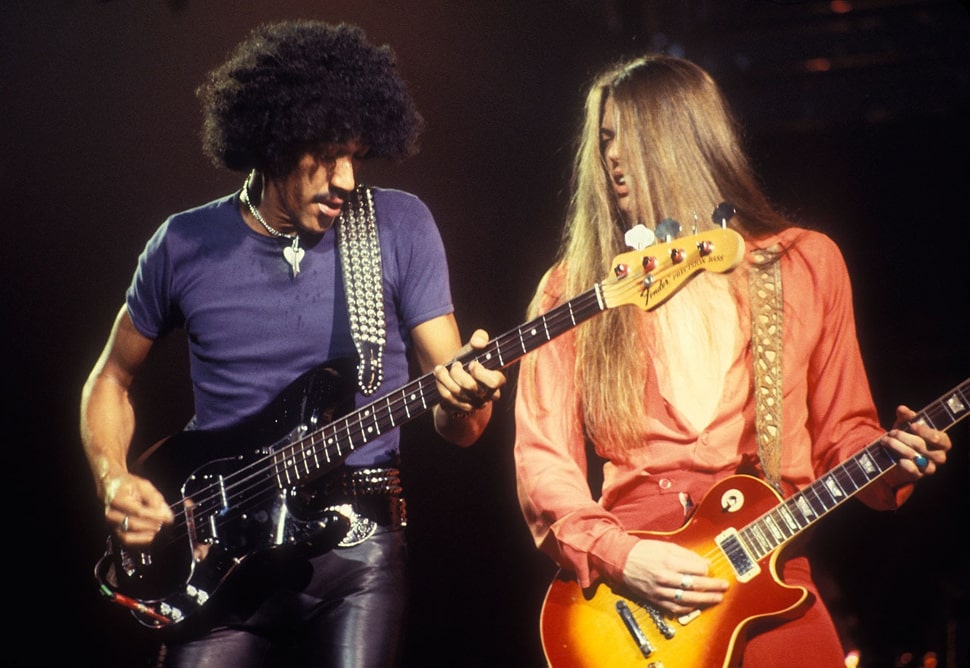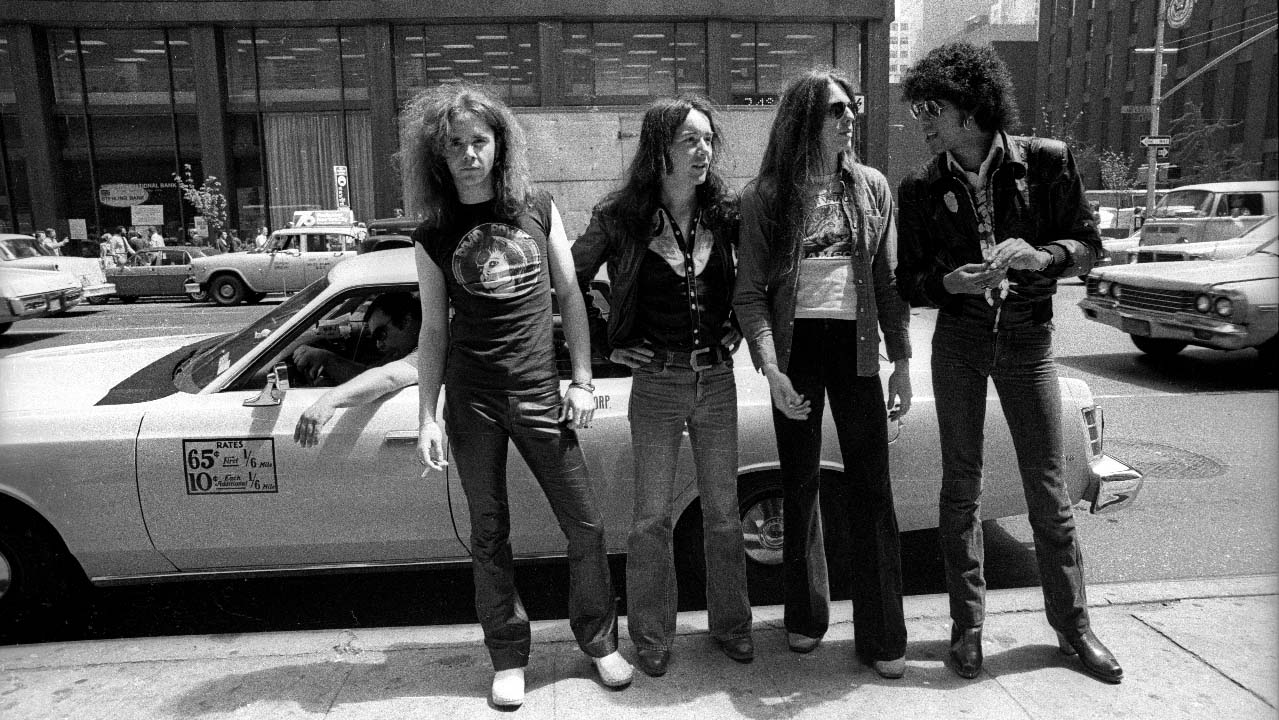In September 1976, Thin Lizzy’s Phil Lynott and Scott Gorham attended Melody Maker’s annual Readers’ Poll ceremony in order to accept the magazine’s Best Newcomer award. Given that Lizzy had had their first UK Top 10 single [Whiskey In The Jar] three years earlier, and had just finished recording their soon-to-be-released seventh studio album [Johnny The Fox], the accolade rather bemused the two band members, but it reflected the extent to which Lizzy had broken into the national consciousness with that year’s Jailbreak album. The challenge now, for a group whose career had become punctuated with false starts, was to build on this momentum.
Lizzy’s manager, Chris O’Donnell, had identified Tony Visconti as the man to push Lynott’s band forward. The New York-born record producer was on a hot streak thanks to his work with T.Rex and David Bowie. And when O’Donnell read an interview in which Visconti had wondered aloud why Thin Lizzy had yet to record an album which matched their live power, the manager reached out to him to see if he might be interested in remedying this situation. It was agreed that Lynott and Gorham would call in on the producer at his Good Earth studio in Soho, London following the Melody Maker awards, to present a new batch of demos earmarked for Lizzy album number eight.

Visconti was impressed by Lizzy’s new material, and by their charismatic, loquacious leader. “He was Prince Charming,” he told Lynott biographer Graeme Thomson. “Full of enthusiasm, really outgoing and friendly. He wanted to make it work, and oozed confidence. All the songs were written and apparently rehearsed. They were in great shape.”
“It was such an important album to us,” Gorham says now. “Because of all the adversities that we’d been going through, we had to pull this together or we were going to go down in a ball of flames.”
Required to record outside the UK for tax reasons – a by-product of their enhanced ‘rock star’ status – Thin Lizzy arrived at Sounds Interchange Studio in Toronto, Canada in May 1977 on a high following a US arena tour supporting Queen.
With guitarist Gary Moore having quit the band for a second-time, and long-time guitarist Brian Robertson still exiled following a bar fight which had forced the cancellation of a previous US tour, Lynott had decided that his group would record their new album as a three-piece, with Californian Gorham playing all the guitar parts. (In the back of his mind, Lynott had the idea that friends such as Brian May, Jimmy Page and Ritchie Blackmore might make guest appearances, but this fanciful notion never came to anything.)
One week into the recording, it appeared that Lizzy might not just be down a guitar player, but also a producer, when Visconti threatened to leave the session, telling O’Donnell: “I can’t work with these guys. They’re falling down drunk.”
The manager duly flew to Toronto to salvage the situation and to convince all involved that they were working on something special. “It’s a great record, it’s fantastic,” said O’Donnell. “And by the way, that’s the single – Dancing In The Moonlight.”
A jazzy, swinging, finger-snapping tale of teenage romance on the streets of South Dublin, the centrepiece of what became the Bad Reputation album was initially presented to Scott Gorham and drummer Brian Downey as just a simple bass line, Gorham recalls.
“Phil said: ‘I’ve got this kinda groove… What do you think?’” says Gorham. “And I said: ‘Yeah, that’s pretty cool. I like that.’ I had another groove in my head that was different than the way he was presenting it – mine was tougher, whereas his was more ‘skippy’. But he was pretty adamant that the way he was presenting it was the most commercial approach. I said: ‘Okay, I’ll go with your way, you’ve been right in the past.’”
Despite initial concerns about working without his long-time foil Robertson, Gorham adapted quickly and thrived, his West Coast harmonic sensibilities bringing a lightness of touch to Lynott’s new composition, adding colour and shade without ever threatening to overpower the central bass riff.
The producer’s stroke of genius was to bring in Supertramp saxophonist John Helliwell to provide the irresistible melodic counterpoint to Lynott’s breezy vocal.
Dropped into radio playlists at the height of punk rock in the summer of ’77, (as a double A-side seven inch backed with the album’s title track), Dancing In The Moonlight carried a twinkling sense of nostalgia, playfulness and innocence gleefully out of step with the times.
“It seemed like a big gamble, and we did wonder what the fans were going to think, because it was way different from anything else that we’d brought out,” says Gorham. “Thankfully they absolutely loved it.”
A Top 20 hit in the UK, Dancing In The Moonlight helped propel its parent album to No.4 in the UK (their highest placing to date) and put them back in the US Top 40. It would become a high point of the band’s live set, immortalised the following year on the magnificent Live And Dangerous album, and remains central to the Thin Lizzy live experience almost four decades on.
“It’s definitely one of our coolest songs,” says Gorham. “The first time we played it [live] you could see everyone singing along, so we knew it had connected. It’s a song that taps into the idea that everyone has of Phil – this romantic, cocky character – and it’s come to be a definitive Lizzy song. I guess he was right about that arrangement… though my way would have been just as cool.”

